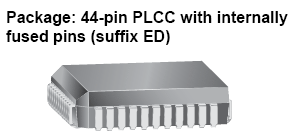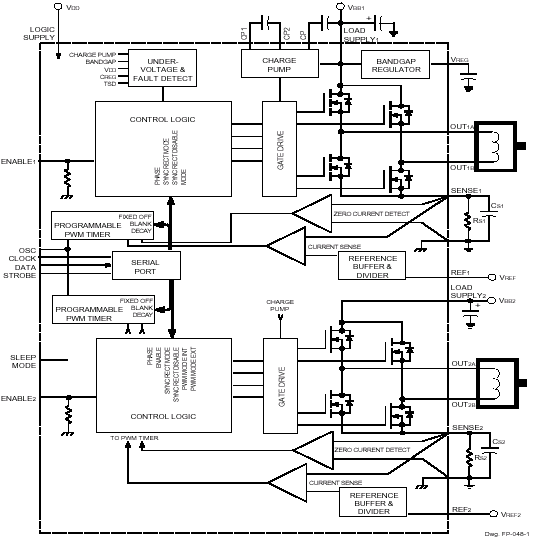
These parts are in production but have been determined to be LAST TIME BUY. This classification indicates that the product is obsolete and notice has been given. Sale of this device is currently restricted to existing customer applications. The device should not be purchased for new design applications because of obsolescence in the near future. Samples are no longer available.
Date of status change: November 2, 2009.
Deadline for receipt of LAST TIME BUY orders: April 30, 2010.
For existing customer transition, and for new customers or new applications, refer to the A3992.
Features
- ±1.5 A, 50 V Continuous Output Rating
- Low rDS(on) DMOS Output Drivers
- Programmable Slow, Fast, and Mixed Current-Decay Modes
- Serial-Interface Controls Chip Functions
- Synchronous Rectification for Low Power Dissipation
- Internal UVLO and Thermal Shutdown Circuitry
- Crossover-Current Protection
- Sleep and Idle Modes
Description
Designed for pulse width modulated (PWM) current control of two DC motors, the A3974 is capable of output currents to ±1.5 A and operating voltages to 50 V. Internal fixed off-time PWM current-control timing circuitry can be programmed via a serial interface to operate in slow, fast, and mixed currentdecay modes.
Independant ENABLE input terminals are provided for use in controlling the speed and torque of each dc motor with externally applied PWM control signals.
Synchronous rectification circuitry allows the load current to flow through the low rDS(on) of the DMOS output driver during the current decay. This feature will eliminate the need for external clamp diodes in most applications, saving cost and external component count, while minimizing power dissipation. Internal circuit protection includes thermal shutdown with hysteresis, undervoltage monitoring of VDD and the charge pump, and crossover-current protection. Special power-up sequencing is not required.
The A3974 is supplied in a 44-pin plastic PLCC with 3 internally fused pins on each side, for maximum heat dissipation. The fused pins are at ground potential and need no electrical isolation.
Functional Block Diagram





